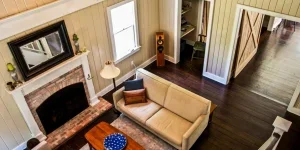The world of interior design is constantly evolving, and each time brings new surprises; what a few days ago was considered outdated and cheesy can suddenly come back in vogue with a new interpretation and become a new trend.
One design element that perfectly illustrates this fluidity is beadboard. Originally associated with country homes and rustic styles, this wall paneling (wainscoting) has made a significant comeback in recent years. Its adaptability and versatility have transformed it from a rural wall décor to an elegant option for any city apartment or home, regardless of the design style.
In this article, we will explore the evolution of beadboard, the reasons for its comeback, and current trends for interior designers and retailers.
Table of Contents
Style and evolution
Current trends in beadboard design
Final thoughts
Style and evolution

Beadboard is an interior solution with vertical panels with regular grooves or strips installed on walls or ceilings. This functional décor has ancient origins dating back to the 18th century, when people used it in their country homes to protect the walls from humidity and wear.
Over the centuries, beadboard has become a symbol of a simple, rustic lifestyle, often associated with coastal interior design style and English cottages. But why has this particular type of wainscotting become a major trend?
A return to simplicity
Today, people are experiencing a renewed and growing desire for simplicity and authenticity in their lives, relationships, and, yes, even interiors. In an increasingly fast-paced, technological world, many want to be able to find refuge in cozy homes and apartments that convey a sense of tranquility and warmth.
With their vintage charm and ability to add texture and character to any space, beadboard planks fit this bill perfectly. They have also started appearing more frequently on social media and design-focused TV shows, where they set the tone for creative, modern projects.
The evolution of beadboard
In the US, beadboard is usually associated with the white-painted porch ceilings and walls of the typical North American home. Despite being once limited to certain home styles, it has now been reimagined and adapted to various contexts. Contemporary designers use it to add rustic touches and create interesting contrasts in modern, minimalist spaces.
Beadboard is now available in many materials, from solid wood to MDF, finishes, and colors, making it suitable for any style of home, from traditional to ultra-modern.
Another factor that contributes to the success of beadboard is its versatility. It can be used in a variety of spaces, from kitchens to bathrooms, from bedrooms to entryways, offering design solutions that meet different needs and preferences.
One thing is certain: the beadboard market is growing, and this trend is set to continue. Sales are expected to increase in the coming years, especially due to the spiking interest in remodeling and custom interior design.
Current trends in beadboard design
Here are some of the hottest trends in beadboard design, offering inspiration and helpful tips for interior designers and retailers looking to incorporate this solution into their designs and assortments.
Beadboard vs. Boiserie wainscoting
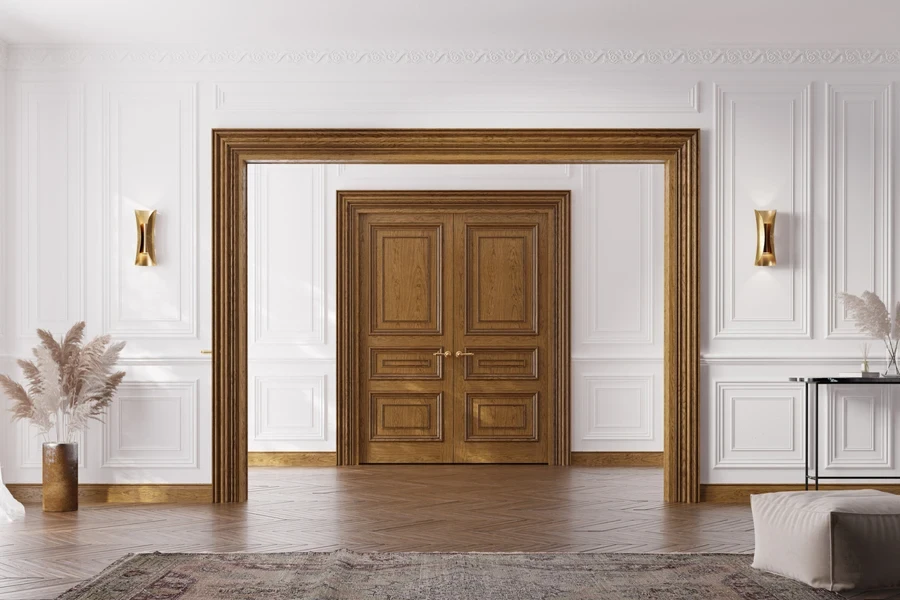
Beadboard is often confused with another classic interior solution: wainscoting, which professionals call by its French name “boiserie.” Although both terms refer to decorative panels applied to walls, the two have significant differences.
Wainscoting is a form of wall decoration that features crafted and often carved wooden panels, typically installed halfway up the wall, although they can cover the entire wall. Originating in France in the 17th century, this technique was used in noble homes to create rich and refined environments. Wainscoting is often associated with classic styles, such as Baroque and Rococo, and boasts elaborate details, such as cornices and ornamental motifs.
Beadboard, on the other hand, is simpler and more rustic. It consists of wood panels (or modern wood-like materials) with parallel, often thin, grooves that create a clean, linear effect.
Ceiling beadboards
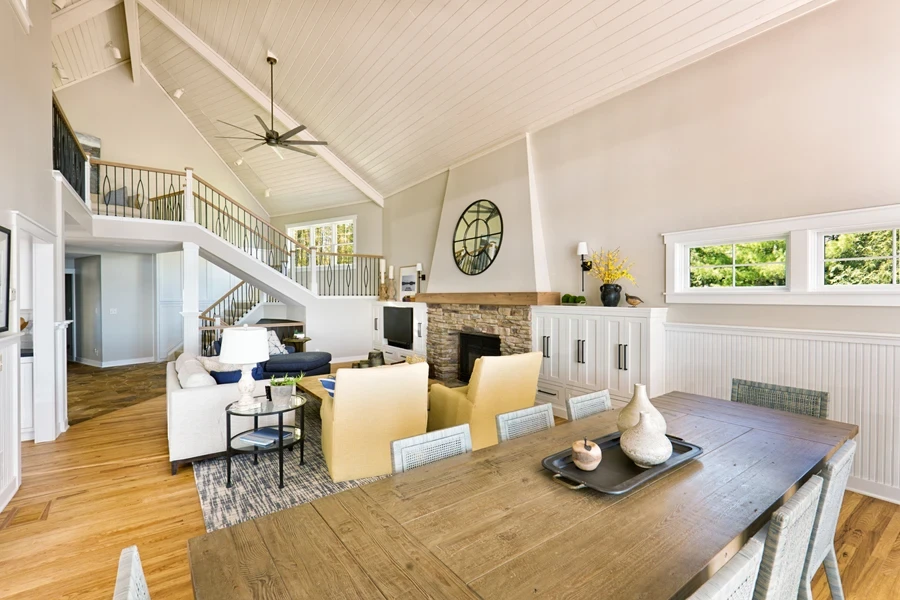
One of the most interesting trends is the use of beadboard on the ceiling. Ceiling beadboard has become a popular choice for adding depth and visual interest to a room while also being low maintenance.
This approach works especially well in rooms with high ceilings, where beadboard can create a welcoming effect and further define the space. It looks great with tiled surfaces, drywall, and high trim boards to echo the ceiling boards.
Wide range of materials
Retailers looking to stand out in the market should consider including beadboard made from various materials in their inventory.
Thick panels made of solid wood like oak, mahogany, or maple are surely more effective in insulation properties and not letting moisture in. However, these beadboard panels are also very heavy and expensive.
Thinner plywood and MDF (medium-density fiberboard) sheets are convenient and versatile and, at the same time, are a great choice for different projects as they can be customized and painted over. For ceiling and wall applications, many also opt for PVC beadboard that offers the same fresh look at a fraction of the cost of a solid wood solution.
Lastly, with the growing focus on sustainability, many beadboard manufacturers are developing high-quality panels made from eco-friendly and recycled materials. This trend addresses consumer demand for greener solutions and offers a new range of textures and finishes to create unique designs.
Innovative color combinations
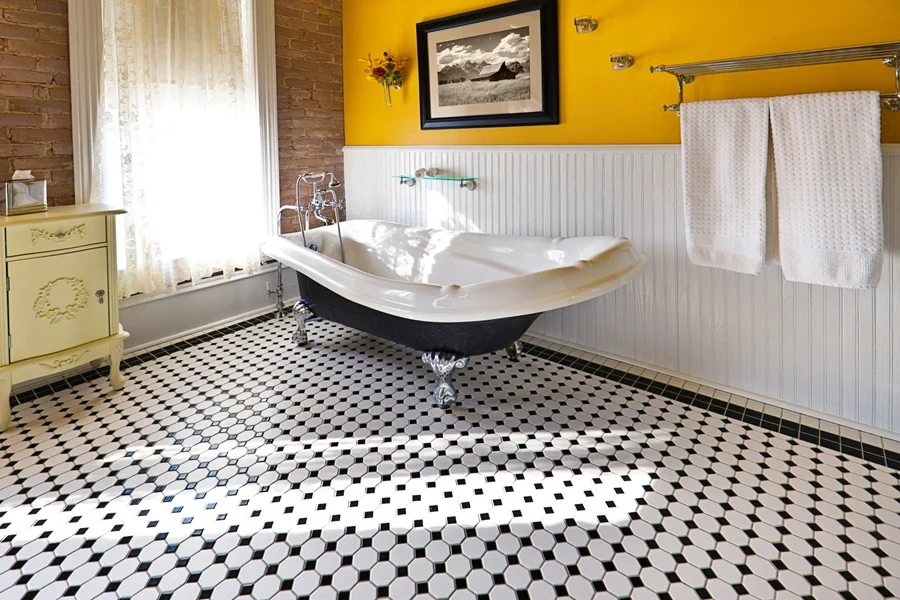
While white has always been the classic color for beadboard, today, designers are experimenting with bolder color combinations, and such products should be included in each store’s assortment.
Beadboard painted in dark colors like charcoal gray or navy blue can add a sophisticated and modern look to any space. Additionally, wall panels in pastel shades are another emerging trend, adding a fresh and light touch, ideal for spaces like bathrooms and kitchens.
Don’t forget small spaces
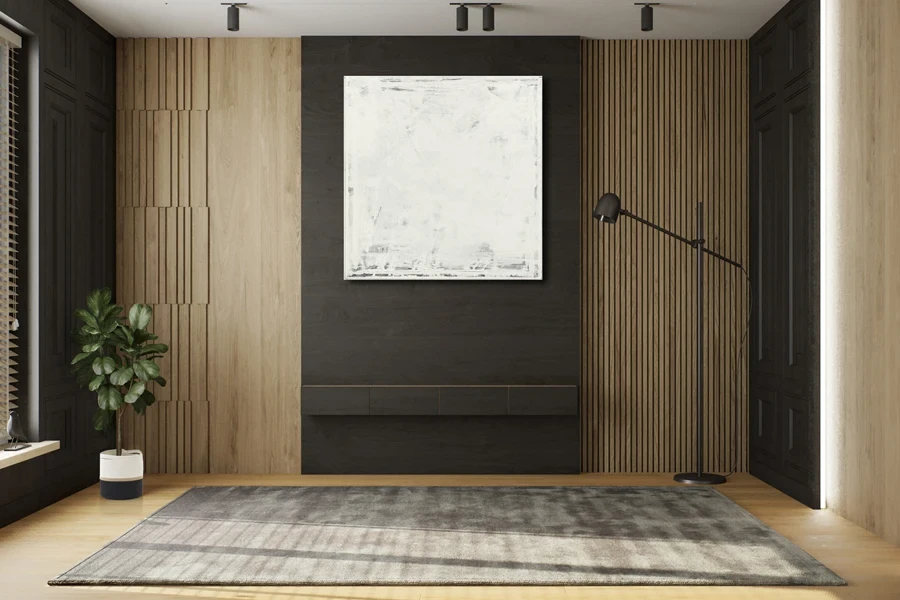
When stoking for beadboard options, don’t forget to look at the thickness and size that may be used in studio apartments and other very small spaces.
In the past, beadboard was often used in large rooms, but today, it is also gaining popularity in more compact spaces such as bathrooms, hallways, and reading nooks. After all, a beadboard can make a small space feel more welcoming and defined without being visually overwhelming.
Final thoughts
In conclusion, beadboard is an interior solution that has reinvented itself and adapted to contemporary needs while maintaining its timeless appeal. With its versatility, ability to add character to any space, and new modern interpretations, beadboard will remain a popular choice among interior designers and consumers.
For retailers, offering a selection of beadboard in their collections represents an opportunity to meet growing demand and to stand out in the interior design market. Whether it’s sustainable options, innovative colors, or creative uses, beadboard is an element that cannot be missing from the assortment of those who want to stay on top of current trends.
